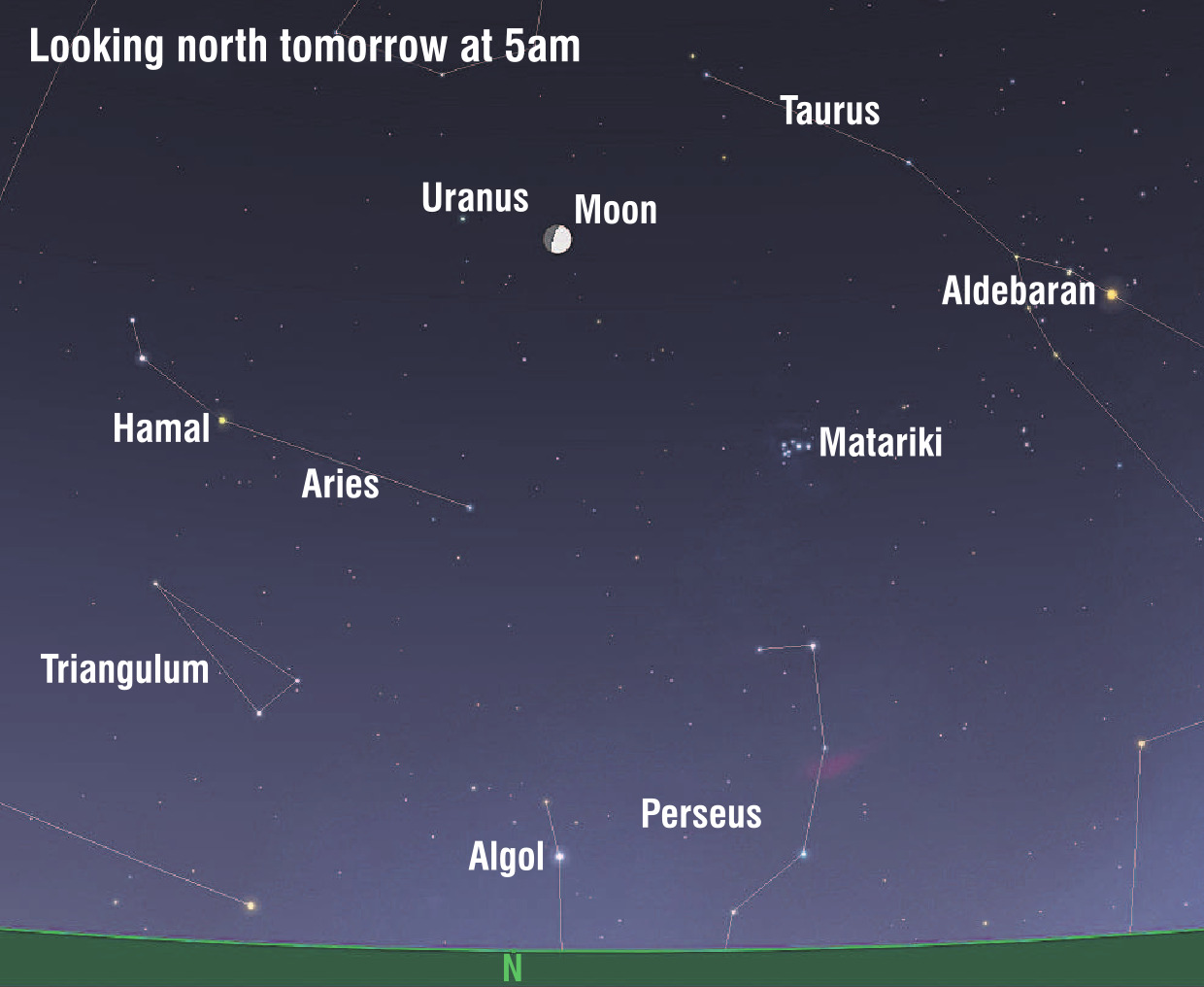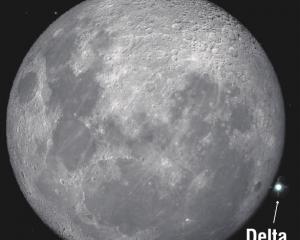

The waning gibbous moon will be high in the northern sky in the early morning hours. At 5am, our closest celestial neighbour will be roughly 30deg above the northern horizon.
The moon will be 65% illuminated making it an excellent target for binoculars or a small telescope. Astronomers call the dividing line between dark and sunlit parts of the moon the lunar terminator. If you scan along the terminator you will be rewarded by brilliant views of the Lunar Apennine mountain range in the moon’s northern hemisphere.
Once you have had your fill of lunar delights, use your binoculars or telescope to scan just under 4deg to the left of the moon in the 10 o’clock position. You should spot a distinctly green "star". This is Uranus.
In theory, if you have good eyesight, you should be able to see Uranus without optical aid on a clear dark night. However, the planet’s proximity to the moon means that bright moonlight will make it difficult to see with the naked eye.

If you have an unobstructed horizon, look directly below Matariki. You should be able to spot the lines of stars that form the legs of the constellation, Perseus, just peeping above the Northern skyline. Most of Perseus is invisible from New Zealand, but the visible parts do contain a fascinating object.
The star, Algol, is one of the most famous eclipsing stars in the sky. Every 2.86 days Algol dramatically dips in brightness for 10 hours . This happens when its brighter component is partially hidden by a dimmer companion.












